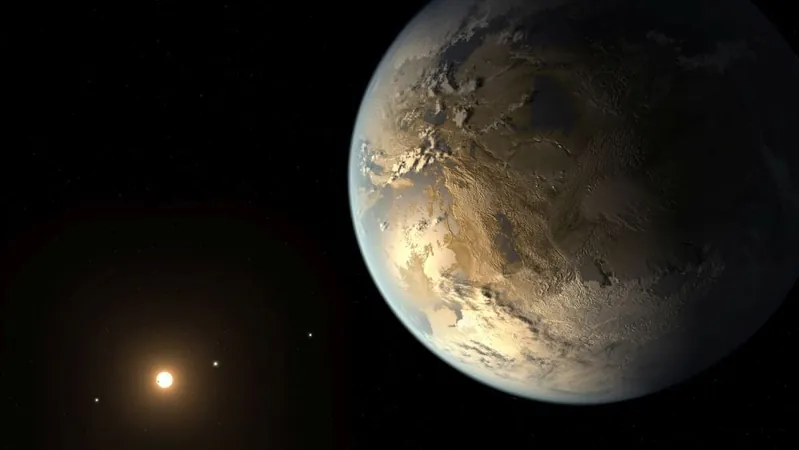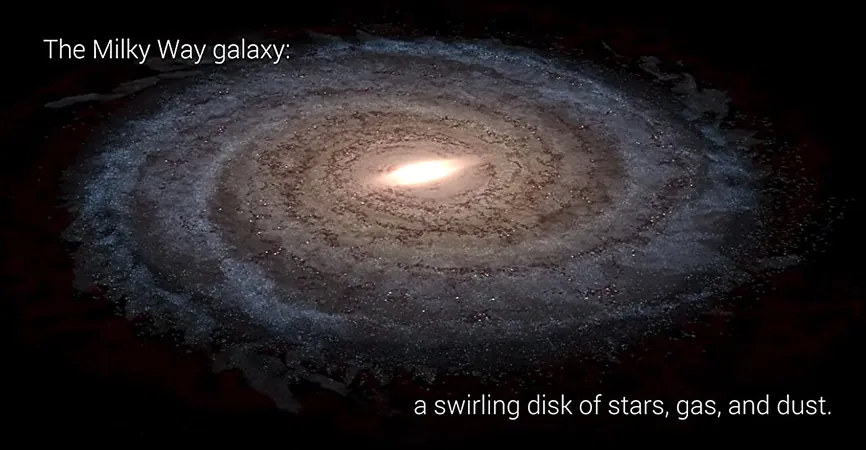
Why Plate Tectonics and CO2 are Essential for Civilization
2025-09-15
Author: Michael
The Role of Plate Tectonics in Civilization
Could our technological civilization even exist without plate tectonics? While life might find a way on a planet with a static surface, the likelihood of it evolving into a society like ours is slim. New research indicates that plate tectonics is crucial for maintaining a stable climate—a necessity for long-lasting habitability.
Key Findings from Recent Research
At the recent Europlanet Science Congress, scientists argued that the absence of planets with plate tectonics and the right carbon-silicate cycles is behind our failure to find technological civilizations beyond Earth. A key study presented at this conference emphasizes that many planets may support temporary life, but only those capable of regulating their climates can foster advanced, intelligent species.
What Makes Earth Special?
Studies published in 'Astrobiology' reveal that Earth's unique carbon-silicate cycle prevents the catastrophic buildup of atmospheric CO2—crucial for sustaining life. Interestingly, while too much carbon dioxide can create a runaway greenhouse effect, plate tectonics offers a natural solution by slowly extracting carbon from the atmosphere and locking it into rocks.
The Atmospheric Balancing Act
On Earth, our atmosphere is primarily nitrogen and oxygen, with just a trace of CO2. This delicate balance allows complex life to thrive. However, researchers highlight that if CO2 levels drop too low, photosynthesis could cease, potentially threatening all aerobic life within the next billion years.
Assessing Other Worlds: The Hunt for Earth-Like Habitats
Using advanced formulas, researchers estimate how many rocky exoplanets could exist in the Milky Way that would support Earth-like conditions. Shockingly, they project that between 1,000 and 1,000,000 rocky planets in the habitable zone might be needed for just one to develop a long-lived climate conducive to advanced life.
Speculations on Extraterrestrial Intelligence
The researchers have even speculated about the chances of other technological civilizations coexisting with ours. They estimate that if just one more existed, it would need to last anywhere from 280,000 to 10 million years concurrently with humanity.
Where to Next? The Search for Contact
Despite our increasing ability to study exoplanet atmospheres, the lack of evidence for life in systems like TRAPPIST-1 e suggests that extraterrestrial intelligence (ETI) could be far rarer than we think, possibly existing 33,000 light-years away.
The Great Filter: A Stubborn Question
The question remains—why haven’t we found any signs of ETI? Is there a fundamental barrier that prevents civilizations from advancing beyond their home planets, or is it simply a matter of vast distances? As our observational technologies improve, we can hope to answer these questions.
Conclusion: An Ongoing Quest for Knowledge
In the end, discovering a sign of life beyond Earth could redefine everything we know about civilization and its possibilities in the universe. Until then, researchers emphasize the importance of searching for extraterrestrial intelligence—a pursuit that could reveal whether we are truly alone.









 Brasil (PT)
Brasil (PT)
 Canada (EN)
Canada (EN)
 Chile (ES)
Chile (ES)
 Česko (CS)
Česko (CS)
 대한민국 (KO)
대한민국 (KO)
 España (ES)
España (ES)
 France (FR)
France (FR)
 Hong Kong (EN)
Hong Kong (EN)
 Italia (IT)
Italia (IT)
 日本 (JA)
日本 (JA)
 Magyarország (HU)
Magyarország (HU)
 Norge (NO)
Norge (NO)
 Polska (PL)
Polska (PL)
 Schweiz (DE)
Schweiz (DE)
 Singapore (EN)
Singapore (EN)
 Sverige (SV)
Sverige (SV)
 Suomi (FI)
Suomi (FI)
 Türkiye (TR)
Türkiye (TR)
 الإمارات العربية المتحدة (AR)
الإمارات العربية المتحدة (AR)